PowerColor Radeon RX 5700 XT Red Devil Review
September 27, 2019 | 12:00
Companies: #amd #powercolor
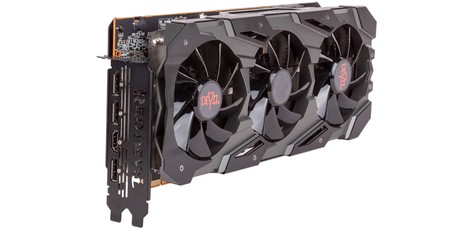
Performance Analysis
For third-party graphics card reviews, we assume a basic familiarity with how the GPU in question stacks up in the wider market – read our original RX 5700 XT review for a better sense of that.
Average performance at 1080p for this card was measured as between 75fps and 118fps in a selection of demanding AAA titles, so it’s a great match for a high refresh rate monitor. That said, the sweet spot between quality and performance as usual is 1440p, where we see average frame rates of between 53fps and 111fps. The 99th percentile at this resolution dips to a low of 36.5fps, so even in the toughest games you’ll maintain smooth gameplay at 1440p. We don’t test RX 5700 XT cards at 4K, as we found the GPU to be incapable of handling it properly in our original review. We don’t recommend it, but less demanding titles would still be viable.
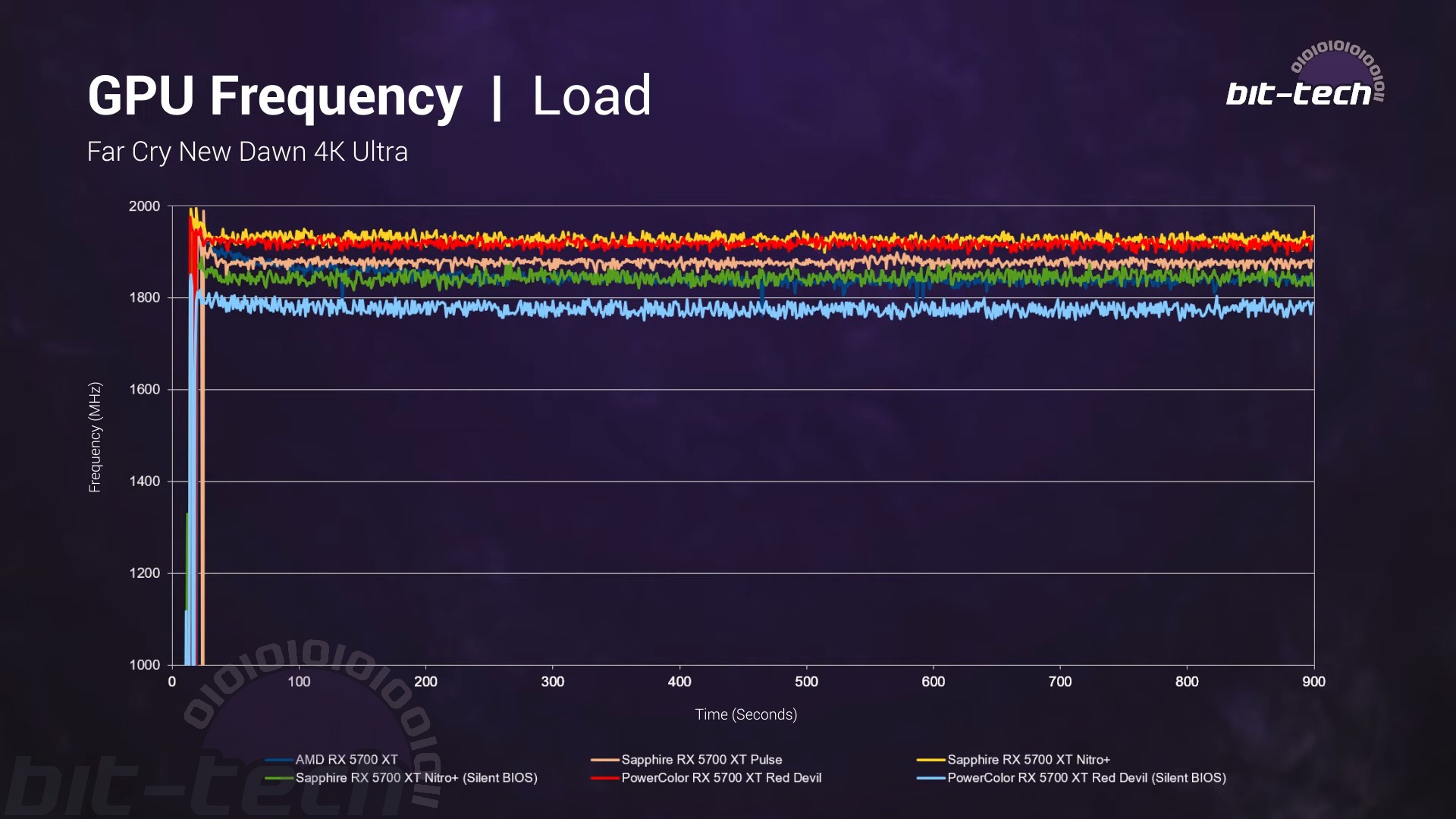
The clock speed across time plot is a handy way to show performance differences between the various RX 5700 XT cards. The PowerColor Red Devil unsurprisingly performs very similarly to the Sapphire Nitro+; this was always likely given the similarities in clock speeds, power limits, and cooling. These two are effectively identical performers and the joint-best so far; the MSI Evoke OC is excluded from the graph to prevent it getting too crowded, but it too can boost to similar levels of just over 1,900MHz.
The performance difference overall between the Nitro+ and Red Devil is around one percent in Sapphire’s favour, but this is meaningless. PowerColor achieves a four percent overall lead on the reference card and is 15 percent faster than a reference RX 5700.
Interestingly, despite the Silent Mode being nominally the same as the reference card in terms of clocks and power, the Red Devil actually has lower clock speeds when set to its Silent Mode, although again the actual difference in performance is very small.
The PowerColor RX 5700 XT slots between most RTX 2060 Super and RTX 2070 Super cards in terms of both price and performance. For instance, the pricier RTX 2070 Super Founders is 3.5 percent faster on average, but PowerColor is faster than the RTX 2060 Super by 10.5 percent. This lead drops to 5.5 percent when we compare it to a well implemented overclocked version like the Gigabyte RTX 2060 Super Gaming OC. Game-to-game variance plays a big role when it comes to AMD versus Nvidia (again this is explored more in the original review), so you shouldn’t take these averages as gospel but rather as guidance. If you have specific games you really want to maximise performance in, focus your comparisons on benchmarks from those games.
To keep the benchmarks comparable, we haven’t included any ray tracing results, since AMD cards do not support the technique. However, this is something that may change the value proposition for you, depending on how you feel about the games that have (or will have) support for it, and how well implemented the technique is in said games. The use of it is becoming more popular, albeit slowly, so this is worth taking into account if you’re hoping to get many years of service from your GPU rather than just one or two years.
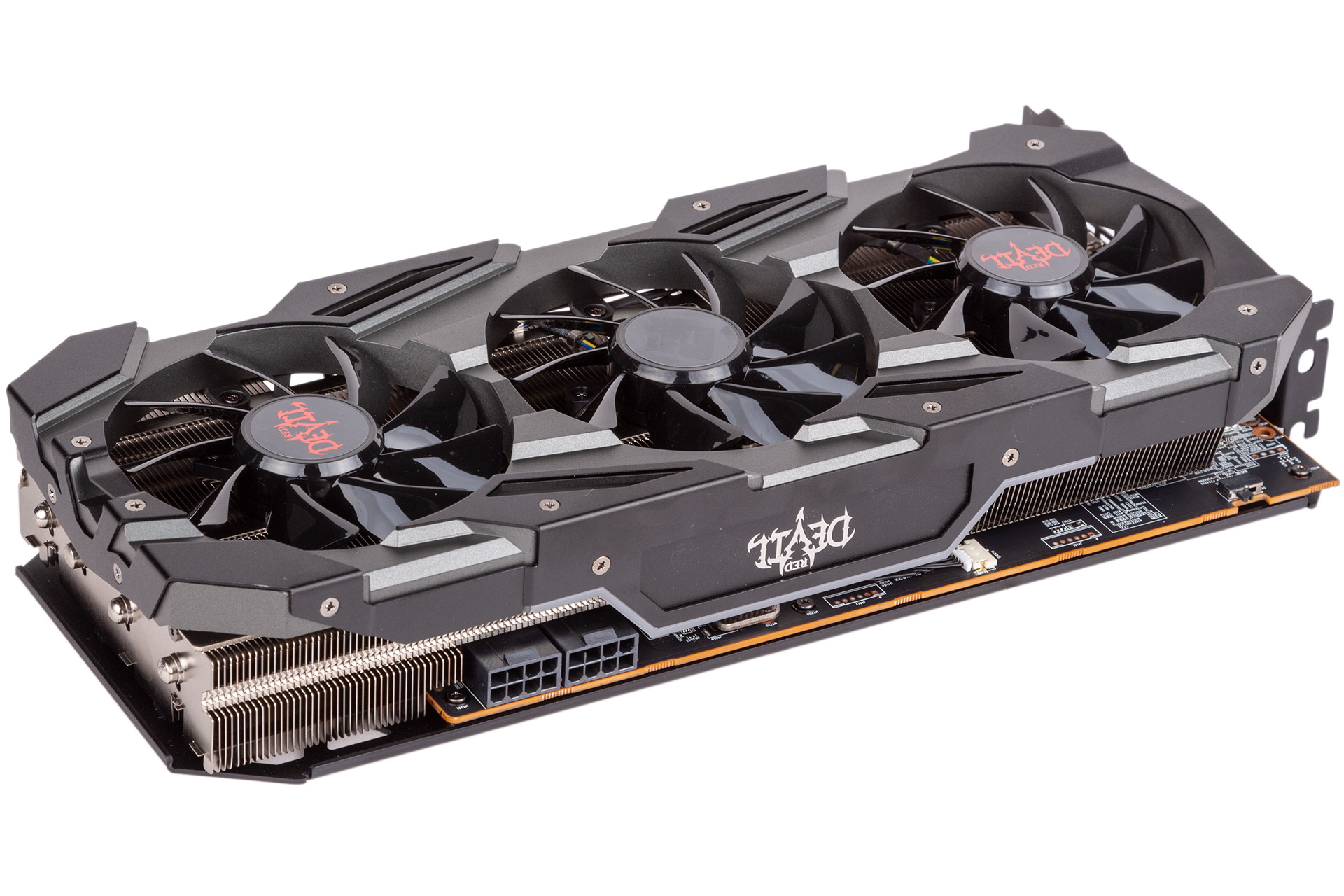
System power consumption is as expected, with PowerColor on par with the Sapphire Nitro+. This is very high and roughly equivalent to the RTX 2080 Ti Founders – a much faster card – but that’s just what happens when you overclock Navi. The conservative Silent BIOS Mode drops overall consumption by 44W and gives PowerColor the most efficient result from an RX 5700 XT yet.
Thermal performance on this card is truly excellent. The default target temperature is around 65°C, making it the coolest card and giving it the best difference over ambient. Performance is similar to MSI’s Evoke OC, but PowerColor is way quieter, has the best VRM cooling we’ve seen so far, and the joint-best memory cooling with Sapphire’s Nitro+. In terms of noise, it’s hard to tell the Sapphire and PowerColor apart; both are way quieter than the reference and quieter than any other partner cards we’ve seen.
We found that the Silent BIOS lets things run a tad hotter on the GPU, which benefits the fan speed when coupled with the much lower power consumption. It’s seriously whisper quiet in this mode, making it a better implemented version than you get on the Nitro+ other than the fact that performance dips ever so slightly below reference. The VRM and memory temperatures are still perfectly healthy - we'd definitely consider switching to this mode long-term.
Overclocked, the card was boosting to just over 2,000MHz in games, and we gained between three and five percent performance. Rankings here are pretty irrelevant, since they’re based on single samples, and the silicon lottery is going to be the biggest factor. Really, if you want to be overclocking Navi, you need to raise the power limit, so it’s more important to focus on getting a card with a cooler than can handle doing this – just like this one can. Temperatures and fan speeds when overclocked were all healthy and tolerable.
Conclusion
We said at the start that there were many on-paper similarities between the RX 5700 XT Red Devil and the Sapphire Nitro+ card. Even after a thorough benchmarking session and performance analysis, we’ve been unable to tease apart really any difference that’s especially meaningful. This is very good news for PowerColor, as it means it joins Sapphire in delivering an excellent RX 5700 XT solution. It cools all the key components very well and does so quietly, and the Silent Mode BIOS ensures you can really maximise efficiency and low noise if you wish without sacrificing much by way of performance. If you want to go the other way and overclock, it also can handle it well.

With other key features like zero-RPM fans, RGB lighting, a dual-BIOS switch, and a three-year warranty all accounted for, we’ve no qualms in recommending this as one of the best graphics cards at or around £450, as this price is actually pretty well placed relative to the price-performance of RTX 2060 Super and RTX 2070 Super.
Of course, it’s always worth remembering the looming presence of ray tracing when making your purchase decision, because in those workloads specifically the value proposition shifts heavily in Nvidia’s favour. While RTX hardware is the only means of using this rendering technique, it can only really be your call at this stage how valuable it is to you, as it’s far from ubiquitous at this point, even when taking into account recent AAA wins for Nvidia.
In short, the premium you pay here over the reference card is high but not at crazy or stupid levels, especially as the reference card is definitely not recommended at all to begin with. Whether you pick this or Sapphire’s Nitro+ is going to come down to minute details; either way you’ll be rewarded with a great product.


MSI MPG Velox 100R Chassis Review
October 14 2021 | 15:04

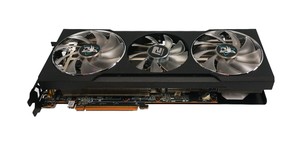
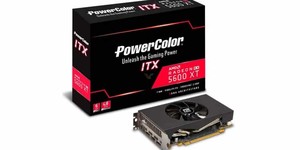






Want to comment? Please log in.